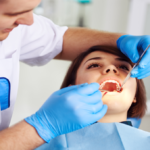Obsessive-compulsive disorder, often shortened to OCD, affects 2.2% of people in the United States during their lifetime, making it the fourth most common psychiatric disorder and the tenth most common medical condition overall. If you’re concerned that you or your teen may have OCD, there are specific criteria your symptoms must meet to be classified as such.
Symptoms of obsessive-compulsive disorder
Obsessions are intrusive thoughts that can take up hours during the day, severely interfere with daily life, and produce significant distress in various domains of functioning. In addition, obsessions often produce an anxiety that the obsessive person tries to alleviate with a compulsion. There are different types of obsessions, but all include worries and intrusive thoughts related to certain themes such as cleanliness, safety, symmetry, and perfectionism.
Compulsions are typically intended to prevent or reduce distress related to obsessions, but they do not always do so. There are two types of compulsions- harm reduction or neutralizing rituals and reassurance-seeking behaviors. Harm reduction rituals involve the sufferer trying to prevent something bad from happening by carrying out ritualistic behaviors like hand washing, checking locks, etc. Reassurance-seeking behavior may include asking others repeatedly whether they love them or think they’re pretty even though they’ve been reassured many times before.
Questions to ask your teen
- Do you have any obsessions or compulsions that make it difficult to function daily?
- Do you experience severe difficulty or impairment in your vocational, social, or other areas of functioning as a result of your obsessions, compulsions, or both?
- Do your symptoms get worse at times of high stress?
- Does your anxiety about thoughts and feelings keep you from enjoying things you once enjoyed?
- Do people tell you that the way you do things is strange?
- Is it hard for you to get started on tasks that would normally be easy?
- Have you noticed a connection between your moods and the urge to perform certain behaviors like washing or checking?
The things you need to know about OCD treatment
OCD treatment aims to eliminate all symptoms. Many people can lessen obsessive-compulsive habits using Cognitive Behavioural Therapy and Exposure and Response Prevention. Serotonin reuptake inhibitors can reduce anxiety and obsessive thoughts. Psychotherapy, relaxation techniques, hypnosis, yoga, mindfulness training, and social skills training may help OCD patients.
The guide to choosing OCD tests for teens
Before getting an OCD test for teens, you must know what type of test you need. Here are the four major types of tests for OCD:
- A self-test: This means that a website or questionnaire can determine whether you have obsessive-compulsive disorder.
- An assessment in person by a mental health professional: These include interviews and various questionnaires.
- A brain scan or other imaging study: Such as magnetic resonance imaging, positron emission tomography, single photon emission computed tomography, and electroencephalography.
- An analysis of genetic markers.
The assessment and diagnosis process can take weeks, months, or even years. More than half of people diagnosed with OCD experience full remission after just two years of treatment. And remember: plenty of resources are available for managing and coping with your condition!
![]()









